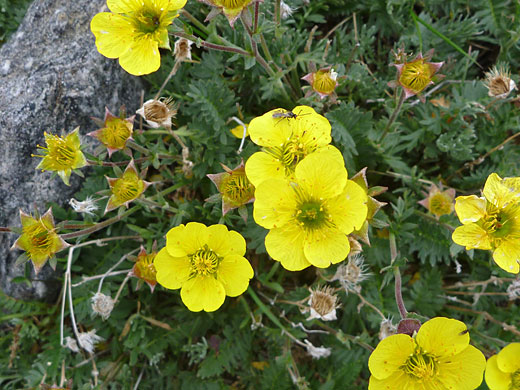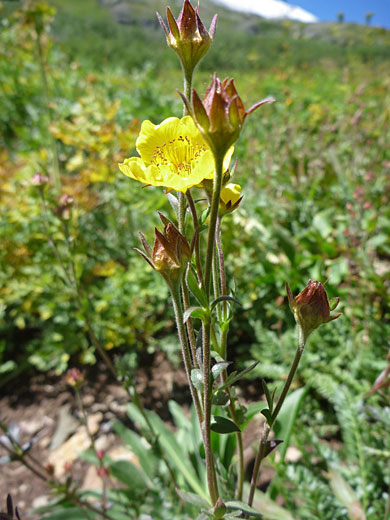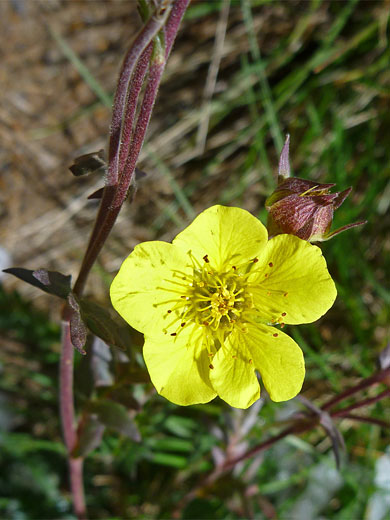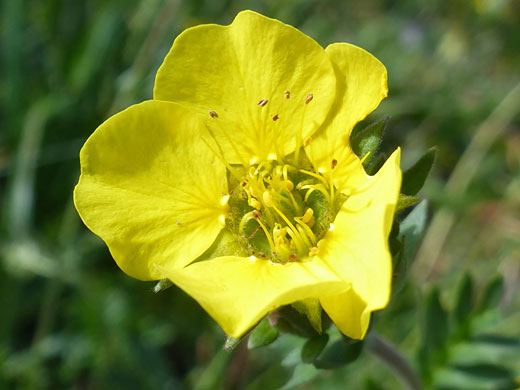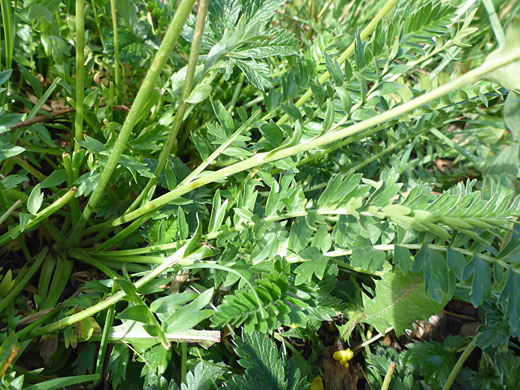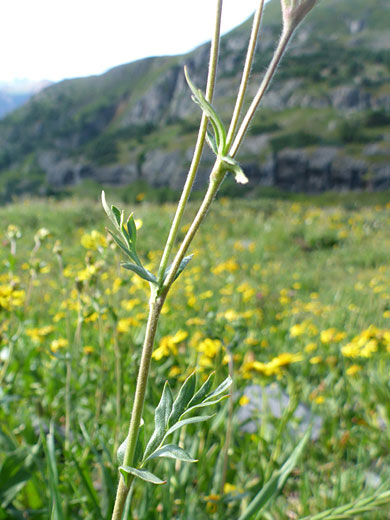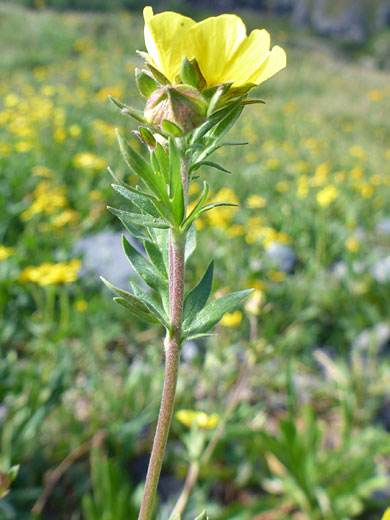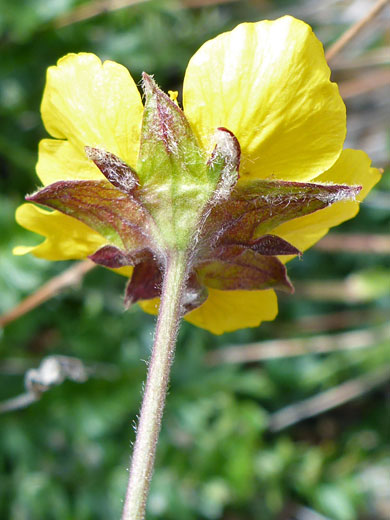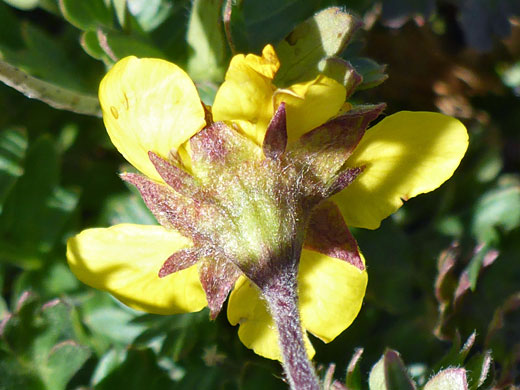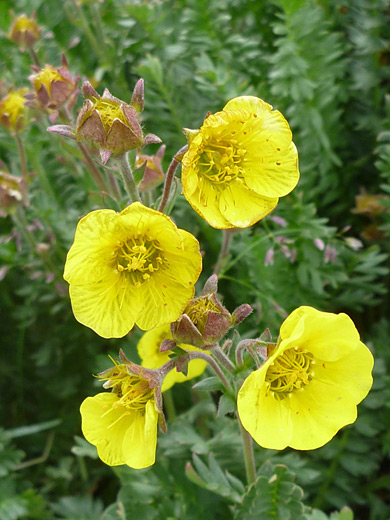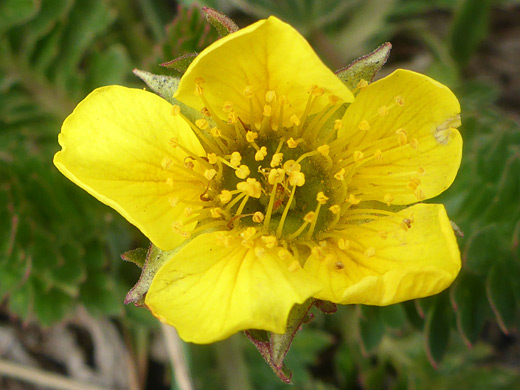Common names:
Alpine avens, Ross' avens
Family:
Scientific name:
Geum rossii
Main flower color:
Range:
The Rocky Mountain states, and parts of Arizona and Nevada
Height:
Usually between 6 and 12 inches; shorter at the highest elevations
Habitat:
Tundra, high elevation meadows, rocky slopes, roadsides, boulder fields; sea level to 13,000 feet
Leaves:
Up to 6 inches long, compound; divided into up to 26 small, finely hairy leaflets
Season:
June to August
Geum rossii is a common plant of high elevation regions, mostly found above the treeline. The bright yellow flowers are formed of five ovate or nearly round petals, overlapping slightly at the base, and five pointed, reddish sepals. Between the sepals are five epicalyx bracts, similar in color and appearance, but narrower. Petals are slightly longer than the sepals. Petal tips have a shallow notch. At the center are many yellow stamens, topped by yellow-brown anthers. Buds are reddish-purple in color. Flowers tend not to open fully (becoming planar), but retain a shallow cup-shape, a factor which differentiates this plant from the various species of cinquefoil.
The dense foliage grows close to the ground, but the branched flower stems reach a height of 12 inches, making the plant quite noticeable. It can form large colonies, many feet across. All the leaflets are a similar size, unlike a few similar geum species.
The dense foliage grows close to the ground, but the branched flower stems reach a height of 12 inches, making the plant quite noticeable. It can form large colonies, many feet across. All the leaflets are a similar size, unlike a few similar geum species.
All Contents © Copyright The American Southwest | Comments and Questions | Contribute | Site Map


